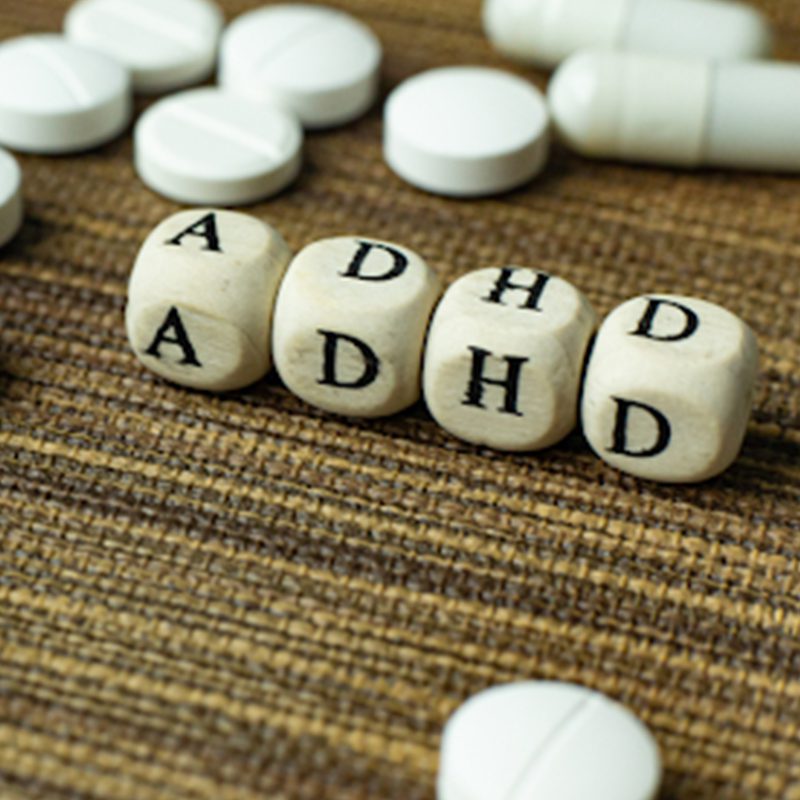Are you the parent of a child who has been diagnosed with ADHD or are you living with it yourself? If so, then you know first hand the real-life symptoms that accompany the condition: difficulty concentrating and sitting still for long periods, impulsiveness, constant fidgeting or talking, and forgetfulness. Living with ADHD, as an adult, a child, or as a child’s parent, can mean days filled with more than your share of frustration and challenges.Many people seek a medical professional’s help and get a prescription without having any real knowledge of the condition, range of symptoms, what the medication does, or other treatment options.
Here’s what you need to know.
What ADHD Looks Like in the Brain
Attention deficit disorder (ADD) is a neurological disorder that causes a range of behavior problems such as difficulty following instructions, focusing on school or work, completing tasks, and interacting socially. Attention deficit hyperactivity disorder (ADHD) is a neurological disorder where a person is unable to control their behavior because of processing issues in their brain and is accompanied by an extremely high level of motor activity.
Despite what well-meaning grandparents and others may believe, both conditions are not caused by poor parenting, family problems, bad teachers, too much TV, food allergies, or excess sugar. Instead, they are due to biological and genetic factors that influence neurotransmitter activity in regions of the brain.
For example, brain images of children with ADHD show that parts of their brains are smaller and less active with an excess of delta and theta waves and a deficit of beta waves. These changes are linked to specific brain chemicals, such as norepinephrine and dopamine, that regulate attention, mood, and behavior. Recent research suggests that people with the condition process information more slowly, and there is more “noise” during their processing. This may be related to immaturity of myelin fibers coating the nerves, which makes the neural transmission between certain brain circuits less efficient.
Joel Nigg, Ph.D., said about the disorder:
“ADHD is not a breakdown of the brain in one spot. It’s a breakdown of the communication networks between regions of the brain that control, emotion, attention, behavior, and arousal.”
Specifically, the ADHD brain typically shows altered activity in four primary functional regions:
-
- Frontal Cortex
This area controls high-level functions:
• attention
• executive function
• organization - Limbic System
This region is located deep within your brain and regulates emotions, attention, and the stress response. - Basal Ganglia
A malfunction here can cause inter-brain communication and information to “short-circuit” resulting in inattention or impulsivity. - Reticular Activating System
This is the major relay system among the many pathways that enter and leave the brain. An impairment here can cause inattention, impulsivity, and hyperactivity.
- Frontal Cortex
Both ADD and ADHD are usually present in childhood but are often mistaken as personality traits and go undiagnosed. As you may know all too well, some children with these issues can have learning disabilities, behavioral or mood disorders, depression, anxiety, and problems with planning, memory, schoolwork, motor skills, social skills, sleep, and control of emotions.
What medications are used to treat ADHD?
According to the article, “FAQ About ADHD Medications”:
“Methylphenidate is the name of the most common medication used to treat ADHD. This is the generic drug contained in prescriptions for Ritalin, Focalin, Concerta and Daytrana. Methylphenidate is also available as a generic medication. Methylphenidate is a Central Nervous System stimulant, or a CNS stimulant.
Adderall is another popular medication for ADHD, which is available in generic form as well. Adderall is a mixture of four different amphetamine salts. Vyvanse, Dexedrine, Dynavel and Xelstrym are also amphetamines which are used to treat ADHD.
While stimulants are the medication of choice for treating ADHD, there are other options. Wellbutrin, an atypical antidepressant, is also used to treat ADHD, especially in adults. Tricyclic antidepressants, such as imipramine, are also used. In some cases, antidepressants may be used along with stimulant medications.
Depakote, an anticonvulsant medication originally developed to treat epilepsy, is sometimes prescribed, particularly if there is a need for a mood stabilizer.
Medications used to treat hypertension or high blood pressure are sometimes used to treat ADHD. Among these medications are Kapvay (clonidine) and Intuniv (guanfacine).”

How ADHD Medication Works
When the brain doesn’t operate optimally, cognitive functioning can be impaired and attention, motivation, mood, and learning abilities can be impacted. Medications can improve some symptoms by helping normalize levels of brain chemicals and helping them work more efficiently. However, they come with concerns, especially for children. According to WebMD, the side effects of the long-term use of ADHD medications can include:
- High blood pressure
- Seizures
- Heart disease
- Irregular heartbeat
- Substance abuse and addiction
- Skin discoloration
In addition to the long-term effects, two of the most common side effects of these medications while taking them are loss of appetite and difficulty sleeping. These can put children at higher risk of developing vitamin deficiencies and deprive their growing brains of essential sleep.
Furthermore, medications aren’t a permanent cure. They’re a temporary solution that provides relief from symptoms while the person is taking the drug. When the person stops the medication, any improvement stops.
There’s a Better Way to Improve an ADHD Brain
The traditional methods of treating mental health and brain conditions are slowly falling out of favor as newer and better options are researched and adopted. Neurofeedback is one of those better alternatives. It has been in use since the 1950s and is a reputable, scientifically proven modality practiced by trained practitioners. Research has confirmed that neurofeedback can reduce the symptoms of ADHD and ADD in as little as eight weeks.
Rather than relying on medication to treat your child, Grey Matters uses the latest brain training technology to teach adult’s and children’s brains healthier ways of functioning. Our professionals will personalize a plan based on an individual’s unique brain map to help increase attention and focusing skills, decrease impulsive behavior and aggression, improve sleep, and reduce or eliminate the need for medication.
Neurofeedback is a method of pinpointing and improving physical and mental health and brain issues at the root cause in the brain, permanently and without medication. It is a specialized form of biofeedback therapy, where people learn to influence their body’s autonomic nervous system at a subconscious level to consistently alter their brain function which improves or alleviates symptoms.
Neurofeedback is a non-invasive, painless, drug-free way to teach the brain better operation, including optimizing brain wave amplitudes, enhancing connectivity between different parts of the brain, and adjusting the level of activity and responsiveness of specific brain regions. The brain learns at a subconscious level to create permanent changes that last after the training session.

Conclusion
There’s a better way.
At Grey Matters, we know how challenging living with ADD/ADHD can be. Through neurofeedback, children and adults can learn to alter their brain operation to reduce symptoms. Unlike medication, the improvements last after the training stops.
Stop medicating and start improving your brain!
Most mental health conditions begin in the brain and can be resolved there. Neurofeedback can teach any brain to function more optimally. Research shows that it successfully improves the symptoms of ADHD and many other conditions, including depression, autism, brain injuries, OCD, stroke recovery, PTSD, addictions, seizure disorders, migraines, chronic pain, IBS and leaky gut, and more. By fine-tuning brain function, neurofeedback can also improve focus and concentration. For example, neurofeedback brain training could improve a person’s performance at school, golf or other sports, or at work.
A better brain and a better you are possible.
At Grey Matters, we are passionate about helping people live their best lives. Send us a message or call us today at (317) 215-7208 to find out how we can help you.


